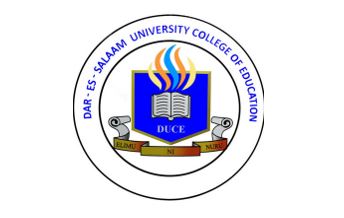BIOLOGY EXAMINATION FORMAT FORM FOUR
033 – BIOLOGY
(For Both School and Private Candidates)
1.0 INTRODUCTION
This examination format is a revised version of the format issued by the National Examinations Council of Tanzania (NECTA) in 2008.
The format is based on the 2010 syllabus. The format emphasises on assessment that measures the higher order thinking skills. However, there is no change in the examination content.

2.0 GENERAL OBJECTIVES
The examination will generally assess the extent to which the candidate is able to:
2.1 evaluate the role, influence and importance of biological science in everyday life;
2.2 develop the capacity to improve and maintain their own health or families and the community;
2.3 develop mastery of fundamental concepts, principles and skills of biological science and related fields such as agriculture, medicine, pharmacy and veterinary;
2.4 develop necessary biological practical skills;
2.5 apply scientific skills and procedures in interpreting biological data;
2.6 acquire basic knowledge and apply appropriate skills in combating problems related to HIV/AIDS/STIs, gender, population, environment, drug/substance abuse, sexual and reproductive health; and
2.7 develop the ability and desire for self-study, self-confidence and self advancement in biological sciences and related fields.
3.0 GENERAL COMPETENCES
The examination will test the candidates’ ability to:
3.1 make appropriate use of biological knowledge, concepts, skills and principles in solving various problems in daily life;
3.2 record, analyse and interpret data from scientific investigations using appropriate methods and technology to generate relevant information in biological science;
3.3 use knowledge and skills in combating health related problems such as HIV/AIDS/STIs, gender, population, environment, drug and drug abuse, sexual and reproductive health; and
3.4 use relevant information on biological science and related fields for self- study and lifelong-learning.
4.0 EXAMINATION RUBRIC
The examination will consist of two papers. Paper 1 (033/1 Biology 1
Theory Paper) and Paper 2 (033/2 Biology 2 Practical Paper).
4.1 033/1 Biology 1
This will be a theory paper of three (3) hours. It will comprise sections A, B, and C with a total of 15 questions. Candidates will be required to answer a total of 14 questions which will weigh 100 marks.
<> Section A will consist of 2 questions. One question will consist of 10 multiple choice items carrying one (1) mark each.
Another question will consist of five (5) matching items carrying one (1) mark each. Candidates will be required to answer both questions.
This section will weigh a total of 15 marks.
<> Section B will consist of 10 short answer questions each carrying 6 marks. Candidates will be required to answer all the questions. This section will weigh a total of 60 marks.
<> Section C will consist of three (3) essay questions. Candidates will be required to answer two (2) questions of which one will be compulsory.
The compulsory question will carry 15 marks and the other question will carry 10 marks, making a total of 25 marks in this section.
4.2 033/2 Biology 2
This paper will either be the actual practical or the alternative to the practical. Three equivalent alternatives of the actual practical papers (033/2A Biology 2A, 033/2B Biology 2B and 033/2C Biology 2C) will be set. Only one alternative to the practical (033/2 Biology 2) will be set. Candidates will be required to sit for either actual practical or alternative to practical papers.
The actual practical paper will be for 21/2 hours. The paper will consist of two (2) questions and candidates will be required to answer all the questions. Question 1 will be from either Nutrition, Gaseous Exchange and Respiration, Transport of Materials in Living Things, Movement, Reproduction, Co-ordination or Growth topics.
Question 2 will be from the topic of Classification of Living Things. Each question will carry 25 marks making a total of 50 marks in this paper. The alternative to practical paper will be for 21/2 hours.
The paper will consist of five (5) questions. Candidates will be required to answer all the questions. Each question will carry 10 marks, making a total of 50 marks in this paper.
The questions will be taken from any of the topics listed in the examination content sub-section 5.3.
Note
(i) The actual practical paper will have more than one alternative paper, which will be sent to schools depending on the number of candidates.
Alternative A will be sent to schools with up to 100 candidates, alternatives A and B to schools with candidates not exceeding 200 and alternatives A, B and C to schools with more than 200 candidates.
(ii) A checklist of biology laboratory specimens, chemicals, apparatuses, equipment and materials required for the examination will be sent to schools not less than three months before the date of sitting for this paper.
However, the 24 hours advance instructions will be sent in advance to be opened 24 hours prior to the beginning of the examination for making necessary laboratory arrangements.

5.0 EXAMINATION CONTENT
5.1 033/1 Biology 1
5.1.1 Introduction to biology
5.1.2 Safety in our environment
5.1.3 Health and immunity
5.1.4 Cell structure and organisation
5.1.5 Classification of living things
5.1.6 Nutrition
5.1.7 Balance of nature
5.1.8 Transport of materials in living things
5.1.9 Gaseous exchange and respiration
5.1.10 Movement
5.1.11 Co-ordination
5.1.12 Excretion
5.1.13 Regulation
5.1.14 Reproduction
5.1.15 Growth
5.1.16 Genetics
5.1.17 Evolution
5.1.18 Human Immunodeficiency Virus (HIV), Acquired Immune Deficiency Syndrome (AIDS) and Sexually Transmitted Infections (STIs).
5.2 032/2 Biology 2 (Actual Practical)
5.2.1 Nutrition
5.2.2 Gaseous exchange and respiration
5.2.3 Transport of materials in living things
5.2.4 Movement
5.2.5 Reproduction
5.2.6 Co-ordination
5.2.7 Growth
5.2.8 Classification of living things
5.3 033/2 Biology 2 (Alternative to Practical)
5.3.1 Nutrition
5.3.2 Gaseous exchange and respiration
5.3.3 Transport of materials in living things
5.3.4 Movement
5.3.5 Reproduction
5.3.6 Co-ordination
5.3.7 Growth
5.3.8 Classification of living things























































